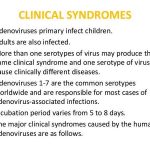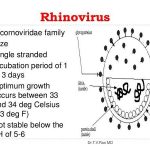
Adenoviruses cause primary infection in children and, less commonly, adults. Reactivation of virus occurs in immunocompromised children and adults. Several distinct clinical syndromes are associated with adenovirus infection (Box 1). Acute pharyngitis is usually nonexudative but is associated with fever.







